
ANATOMICAL SCIENCE INTERNATIONAL
Scope & Guideline
Advancing Research in Anatomy and Medical Science
Introduction
Aims and Scopes
- Anatomical Variations and Clinical Relevance:
The journal emphasizes the study of anatomical variations across different populations and species, highlighting their clinical significance and implications for surgical practices. - Morphometric and Imaging Studies:
It publishes research that employs morphometric analyses, imaging techniques (such as 3D visualization and CT scans), and other quantitative methods to explore anatomical structures. - Embryology and Developmental Anatomy:
Research on embryological development and anatomical changes throughout growth stages is a core area, providing insights into congenital anomalies and variations. - Neuroanatomy and Functional Relationships:
The journal includes studies that investigate the anatomical relationships and neuroanatomical structures, contributing to the understanding of neurological conditions and treatments. - Educational Anatomy and Terminology:
It addresses the importance of anatomical terminology and educational methodologies, fostering a universal language for anatomy among researchers and practitioners.
Trending and Emerging
- 3D Visualization and Digital Anatomy:
There is an increasing trend towards using 3D modeling and visualization techniques, which enhance understanding of anatomical structures and their relationships in a dynamic manner. - Interdisciplinary Approaches in Anatomy:
Research that integrates anatomy with fields such as engineering, computer science, and biotechnology is gaining traction, indicating a shift towards collaborative and innovative methodologies. - Focus on Clinical Applications and Surgical Techniques:
An emphasis on studies that explore the clinical applications of anatomical research, particularly in surgical techniques and interventions, reflects the journal's commitment to practical outcomes. - Neuroanatomy and Neurological Disorders:
An uptick in studies examining the anatomical basis of neurological conditions, including neuroinflammation and neurodegeneration, highlights the growing intersection of anatomy and neuroscience. - Anatomy Education Innovations:
There is a notable increase in research addressing new pedagogical methods and technologies used in anatomy education, emphasizing the need for modernized teaching practices.
Declining or Waning
- Traditional Anatomical Descriptions:
There appears to be a waning interest in purely descriptive anatomical studies without clinical context, as more emphasis is placed on applications and implications of findings. - Historical Perspectives in Anatomy:
Research related to the history of anatomical terminology and historical case studies has decreased, possibly due to a growing preference for contemporary and clinically relevant studies. - Basic Anatomy without Technological Integration:
Studies that focus solely on basic anatomical structures without integrating modern imaging or technological advancements are becoming less common.
Similar Journals
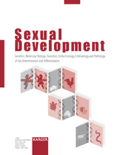
Sexual Development
Elevating the Discourse on Sexual DifferentiationSexual Development is a distinguished peer-reviewed journal published by KARGER, focusing on the intricate biological processes underpinning sexual differentiation and development across various organisms. With an ISSN of 1661-5425 and an E-ISSN of 1661-5433, the journal has established itself as a vital resource for researchers in the fields of Developmental Biology, Embryology, and Endocrinology. Hailing from Basel, Switzerland, this journal is committed to disseminating high-quality research that explores the complexities of sexual development, including genetic, environmental, and hormonal influences. With considerable recognition in the academic community, it currently holds a Q2 ranking in Embryology and Q3 rankings in both Developmental Biology and Endocrinology, Diabetes and Metabolism. Researchers and professionals are encouraged to contribute to and access its wealth of knowledge, thereby advancing understanding and discovery in this critical area of biological research. The journal's continuous publication since 2006 reflects its dedication to evolving the discourse and knowledge base surrounding sexual development, making it an essential platform for scholars in the field.
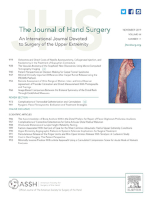
JOURNAL OF HAND SURGERY-AMERICAN VOLUME
Uncovering Breakthroughs in Hand Surgery and OrthopedicsJOURNAL OF HAND SURGERY-AMERICAN VOLUME, published by W B SAUNDERS CO-ELSEVIER INC, is a premier academic journal specializing in the dynamic field of hand surgery and related orthopedic topics. Since its inception in 1976, this influential journal has been a vital resource for professionals, researchers, and students seeking cutting-edge research and clinical insights in hand and upper extremity surgery. It holds esteemed Q1 rankings in both the Orthopedics & Sports Medicine and Surgery categories, reflecting its significant impact within the medical community. With an impressive Scopus rank of #168 out of 551 in Medicine _ Surgery and #126 out of 321 in Medicine _ Orthopedics and Sports Medicine, the Journal of Hand Surgery continues to set the standard for innovation and excellence. Although it does not offer Open Access options, its rigorous peer-reviewed content remains invaluable for advancing the discipline, making it essential reading for anyone committed to improving surgical techniques and patient outcomes in hand surgery.
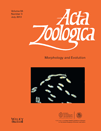
ACTA ZOOLOGICA
Championing Innovative Discoveries in ZoologyACTA ZOOLOGICA, published by WILEY, is a distinguished journal that serves as an essential resource for researchers and professionals in the fields of Animal Science, Zoology, Cell Biology, and Ecology. With its ISSN 0001-7272 and E-ISSN 1463-6395, this journal has been contributing to the scientific community since 1920 and continues to explore new dimensions in zoological research. As of 2023, it holds an impactful position with a Q3 ranking in Animal Science and Zoology as well as Ecology, Evolution, Behavior and Systematics, signifying its relevance and emerging influence in these domains. Although it is not an Open Access journal, ACTA ZOOLOGICA remains committed to disseminating high-quality research and facilitating scholarly discussions among its audience. The journal aims to publish original articles, reviews, and critical findings that enhance understanding of animal biology and conservation, addressing global ecological challenges. Its rankings in Scopus further underscore its scholarly reputation, making it a valuable addition to the libraries of institutions and individuals alike.
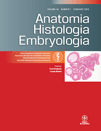
ANATOMIA HISTOLOGIA EMBRYOLOGIA
Bridging Veterinary and Medical Knowledge through ResearchANATOMIA HISTOLOGIA EMBRYOLOGIA, published by Wiley, is a well-regarded journal that serves as a vital resource in the field of anatomy and histology, with a particular emphasis on embryological studies. Established in 1972, this journal fosters cutting-edge research and discussions that deepen our understanding of the intricate relationships between structure and function across various species, while also addressing the parallels within veterinary and medical contexts. Though currently not open access, the journal maintains a significant impact within its scope, evidenced by its strong performance in Scopus rankings, particularly in the veterinary sciences, where it stands at rank #81 out of 194. With its dedicated focus on progressive scientific inquiry and publication regularly until 2024, the journal is committed to advancing knowledge and providing a platform for scholars, researchers, and practitioners alike. ANATOMIA HISTOLOGIA EMBRYOLOGIA is pivotal for those aiming to engage with the latest findings and methodologies in the fields of medicine and veterinary science, ensuring it remains an essential addition to any academic library.
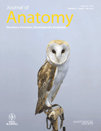
JOURNAL OF ANATOMY
Your Gateway to Cutting-Edge Anatomical DiscoveriesThe JOURNAL OF ANATOMY, published by Wiley, is a premier international journal dedicated to advancing the field of anatomy and its related disciplines. With the ISSN 0021-8782 and E-ISSN 1469-7580, this esteemed journal has been at the forefront of anatomical research since its inception in 1945. Renowned for its rigorous peer-review process, the journal has earned a prestigious impact factor reflecting its high standard of scholarly work. This includes a 2023 Quartile ranking of Q1 in Anatomy, underscoring its prominence among top-tier publications. The journal’s diverse scope encompasses key fields such as cell biology, developmental biology, and molecular biology, making it an essential resource for researchers and practitioners alike. Publishing cutting-edge research and reviews, the JOURNAL OF ANATOMY aims to foster innovative scientific discourse and exploration within the anatomical sciences, solidifying its role as a vital hub for the global anatomical community.
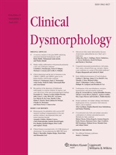
CLINICAL DYSMORPHOLOGY
Advancing the understanding of congenital disorders.CLINICAL DYSMORPHOLOGY, published by Lippincott Williams & Wilkins, is a pivotal journal in the fields of anatomy, genetics, and pediatric health, with a significant focus on the study of congenital disorders and their phenotypic manifestations. Established in 1992, this esteemed journal has contributed valuable insights into the understanding of dysmorphic syndromes and their clinical implications, making it an essential resource for researchers, clinicians, and students alike. With an impact factor indicative of its robust scholarly influence, CLINICAL DYSMORPHOLOGY engages a diverse readership through specialized articles, case studies, and reviews that advance the knowledge of genetic conditions and associated anatomical anomalies. Although it operates under a non-open access model, the journal is highly regarded with a 2023 ranking of Q3 in Anatomy and Q4 in several other relevant categories, reflecting its ongoing commitment to quality research in the domain of clinical medicine. Researchers and professionals are encouraged to contribute to and explore the rich content of this journal as it continues to shape the discourse in dysmorphology and related fields until its expected convergence in 2024.
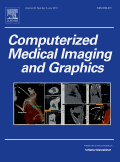
COMPUTERIZED MEDICAL IMAGING AND GRAPHICS
Pioneering Insights in Computerized Medical ImagingCOMPUTERIZED MEDICAL IMAGING AND GRAPHICS, published by PERGAMON-ELSEVIER SCIENCE LTD, is a leading international journal that has significantly contributed to the fields of medical imaging, graphics, and informatics since its establishment in 1988. With a remarkable reputation reflected in its Q1 quartile rankings across multiple categories—including Computer Graphics, Health Informatics, and Radiology—this journal maintains a prominent position in the academic community, evidenced by its Scopus rankings where it ranks in the top percentile across various disciplines. The journal aims to advance knowledge and innovation within the intersection of technology and healthcare, featuring high-quality research that addresses contemporary challenges in medical imaging and graphical methodologies. With no open access options currently available, this journal serves as a crucial resource for researchers, professionals, and students who are at the forefront of advancing imaging technology and its applications in medicine.

Anatomical Sciences Education
Cultivating Insights for Future Medical LeadersAnatomical Sciences Education is a premier academic journal published by WILEY, dedicated to promoting and disseminating research in the fields of anatomy, embryology, and histology. With an impressive impact factor reflecting its Q1 ranking in key categories such as Anatomy, Embryology, and Histology, this journal serves as a vital resource for researchers, professionals, and students alike. Since its inception in 2008, Anatomical Sciences Education has cultivated a robust platform for advanced scholarship, offering insights that enhance educational practices and methodologies in anatomical sciences. Based in the United States, the journal aims to foster innovation and collaboration within the scientific community, positioning itself as a cornerstone in the pursuit of knowledge in medicine at large. As the journal continues to thrive, it remains committed to open dialogue and sharing groundbreaking discoveries that shape the future of anatomical education and research.
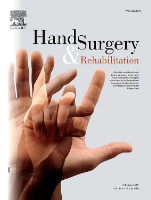
Hand Surgery & Rehabilitation
Empowering Excellence in Surgery and RehabilitationHand Surgery & Rehabilitation, published by ELSEVIER, is a vital resource for researchers, clinicians, and students engaged in the fields of orthopedics, rehabilitation, and surgery. With an ISSN of 2468-1229 and an E-ISSN of 2468-1210, this journal has established a prominent presence since its inception in 2016, with a convergence period extending until 2024. It holds a commendable ranking in the Q2 category within Rehabilitation and Surgery, as well as a Q3 classification in Orthopedics and Sports Medicine for the year 2023. With a Scopus Rank of #290/551 in Surgery and #86/161 in Rehabilitation, it exemplifies the ongoing pursuit of excellence in its domain. As an open access journal, it provides a platform for sharing significant research findings and advancements in hand surgery and rehabilitation, thereby contributing to the enhancement of clinical practice and patient outcomes. Engaging with this journal places professionals at the forefront of the latest developments in these critical areas of medicine, promoting interdisciplinary collaboration and fostering innovation.
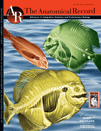
Anatomical Record-Advances in Integrative Anatomy and Evolutionary Biology
Unveiling the Tapestry of Life Through Integrative Research.Anatomical Record-Advances in Integrative Anatomy and Evolutionary Biology, an esteemed journal published by WILEY, serves as a pivotal platform for scholars in the fields of anatomy, biotechnology, ecology, evolutionary biology, and histology. With an ISSN of 1932-8486 and an E-ISSN of 1932-8494, this journal has demonstrated its academic rigor by maintaining a Q2 ranking across multiple relevant categories, including Anatomy and Biotechnology, and consistently achieving a high Scopus ranking in its respective fields. Its scope, covering integrative approaches to anatomical research and evolutionary studies, fosters interdisciplinary collaboration and innovation. Researchers and practitioners can access the journal through various open-access options, ensuring that groundbreaking findings are disseminated widely. As a vital resource for advancing knowledge and exploring emerging trends, this journal greatly contributes to the understanding of biological systems and evolutionary processes, making it an essential read for those dedicated to pushing the boundaries of their respective disciplines.